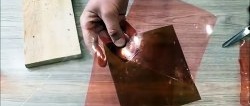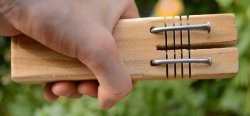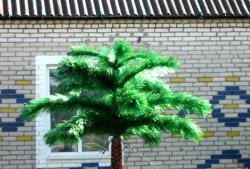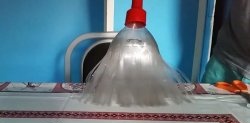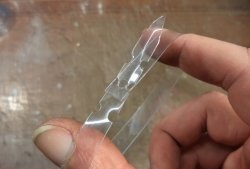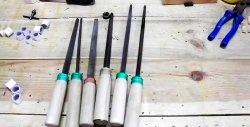How to easily make plastic sheets from PET bottles
Every day, tons of plastic waste accumulate in every major city. The majority of it is occupied by PET bottles. They are one of the few waste products that can be recycled into useful items at home, thereby reducing landfill clutter. One of the recycling options is the production of plastic sheets. The scope of their use is very wide, ranging from glazing small windows in outbuildings to creating greenhouses.

To make sheets from bottles and kegs of different sizes, you need to make a universal adjustable frame. For this, 2 bars are used. Holes are made in them into which 2 pins are inserted. One beam is tightened with nuts on both sides, and the second only on the inside.

You need to pull the blank from a bottle or keg onto the frame.To do this, the bottom and neck are cut off. Then the workpiece is cut lengthwise, flattened into a sheet and screwed onto the frame.
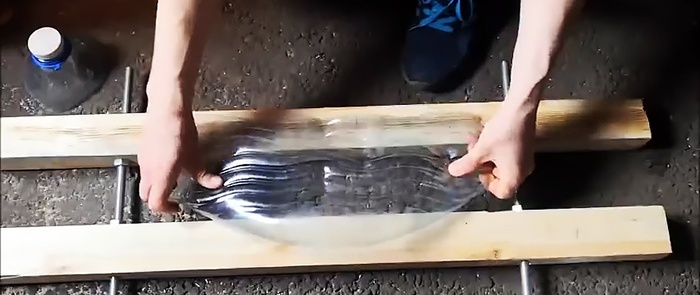
You need to attach it to self-tapping screws with a wide head in increments of a couple of centimeters. They are wrapped on the side of the rail, so there will be less chance of the plastic tearing under tension.
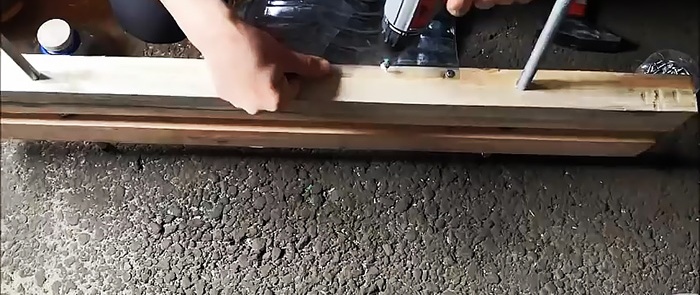
After installing the workpiece, it must be warmed up with a hairdryer.
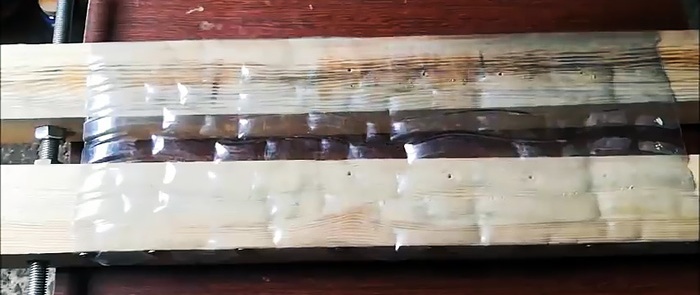
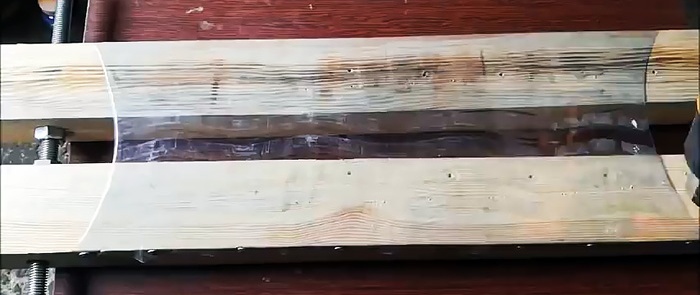
When heated, it will begin to shrink, becoming flat. The relief will disappear from it, the plastic will become thicker. Then the screws are unscrewed and the sheet is trimmed along the edges. A 5 liter bottle produces a sheet of 170x410 mm. If you use a keg, the sheet size will be 260x710 mm.
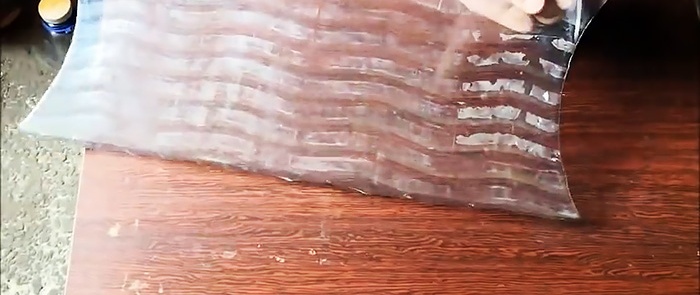
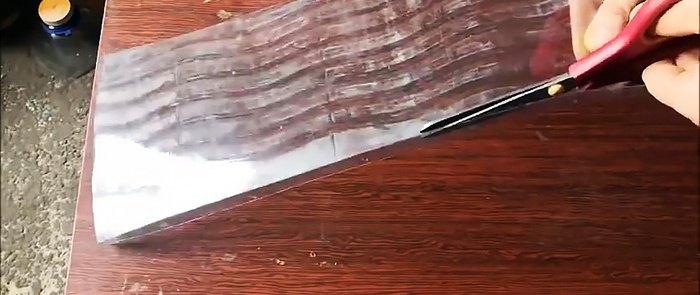
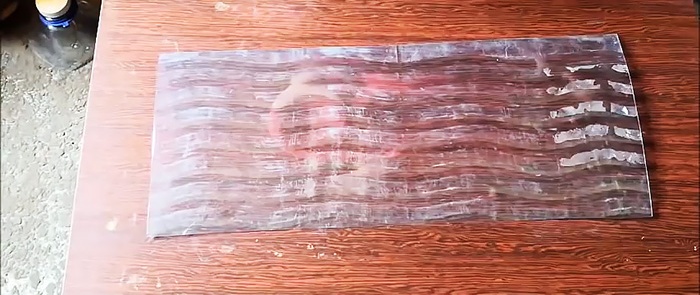
Instead of self-tapping screws, you can strengthen the workpieces before heat shrinking them onto staples.
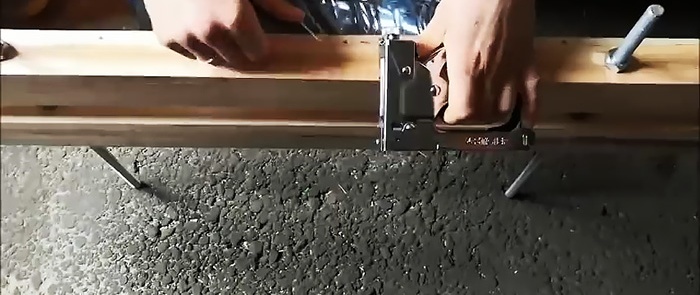
But the screws hold stronger. In addition, they break the bars less. You can wrap them in the same holes, recycling hundreds of bottles.
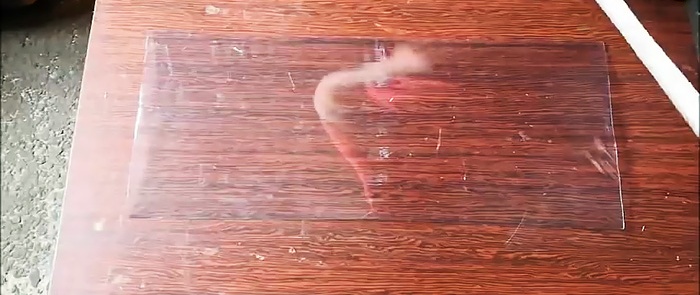
You can also select a board or piece of chipboard to match the inner diameter of the bottle or keg, and stretch the blanks onto them without cutting them lengthwise first.
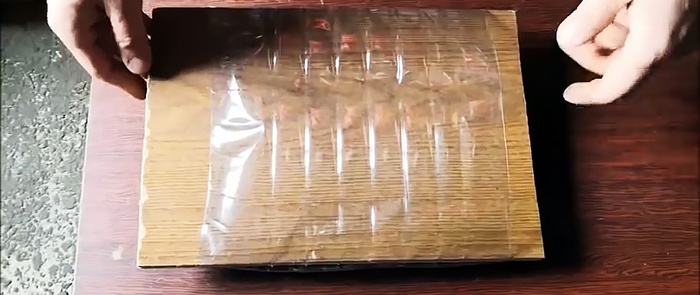
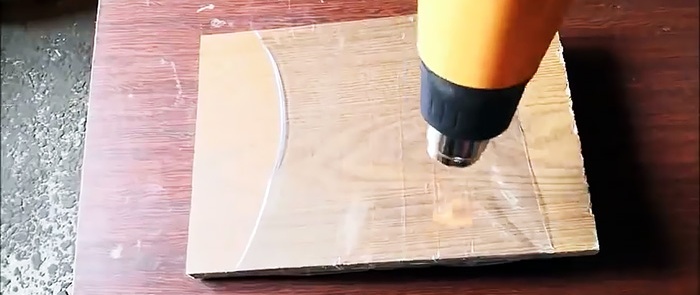
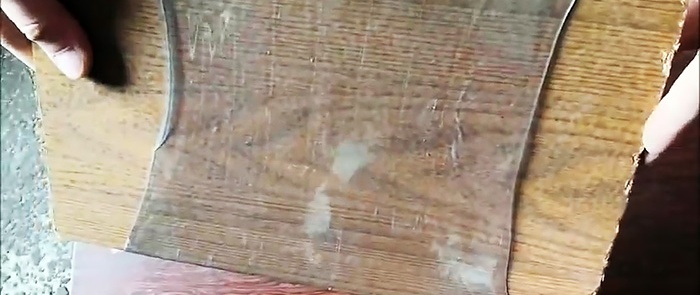
This will eliminate the need for self-tapping screws, but in this case you will end up with 2 small sheets.
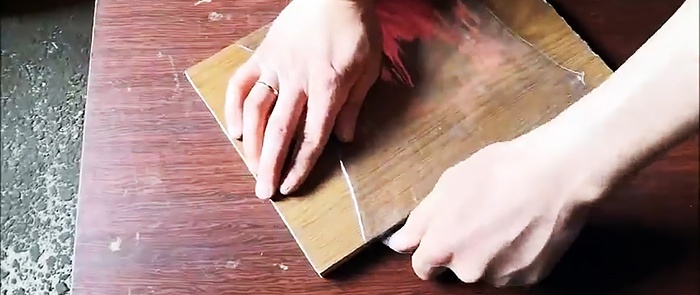
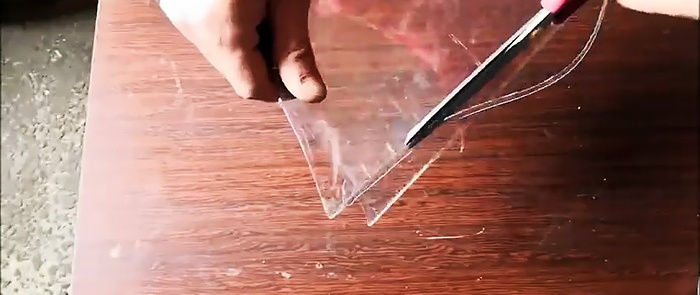
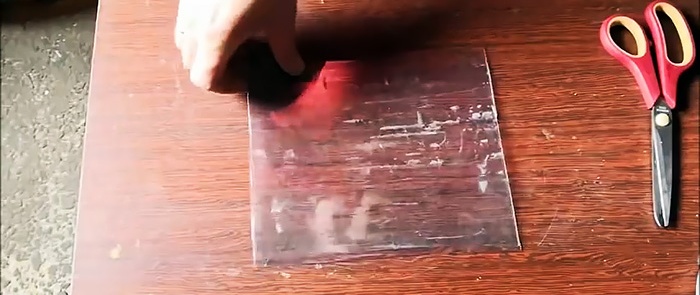
Homemade sheets can be sewn together with thin PET tape. The spliced sheet is useful for covering the greenhouse. It will last many times longer than conventional greenhouse film. You can also sheathe the roof of outbuildings with sheets instead of flexible tiles. They can be used to close small window openings.

What you will need:
- bottles of 5 liters or more, or beer plastic kegs;
- construction hair dryer;
- screws with a wide head;
- wooden blocks – 2 pcs.;
- long threaded rods M10-M14;
- nuts M10-M14 – 6 pcs.;
- scissors.
Plastic sheet manufacturing process
To make sheets from bottles and kegs of different sizes, you need to make a universal adjustable frame. For this, 2 bars are used. Holes are made in them into which 2 pins are inserted. One beam is tightened with nuts on both sides, and the second only on the inside.

You need to pull the blank from a bottle or keg onto the frame.To do this, the bottom and neck are cut off. Then the workpiece is cut lengthwise, flattened into a sheet and screwed onto the frame.

You need to attach it to self-tapping screws with a wide head in increments of a couple of centimeters. They are wrapped on the side of the rail, so there will be less chance of the plastic tearing under tension.

After installing the workpiece, it must be warmed up with a hairdryer.


When heated, it will begin to shrink, becoming flat. The relief will disappear from it, the plastic will become thicker. Then the screws are unscrewed and the sheet is trimmed along the edges. A 5 liter bottle produces a sheet of 170x410 mm. If you use a keg, the sheet size will be 260x710 mm.



Instead of self-tapping screws, you can strengthen the workpieces before heat shrinking them onto staples.

But the screws hold stronger. In addition, they break the bars less. You can wrap them in the same holes, recycling hundreds of bottles.

You can also select a board or piece of chipboard to match the inner diameter of the bottle or keg, and stretch the blanks onto them without cutting them lengthwise first.



This will eliminate the need for self-tapping screws, but in this case you will end up with 2 small sheets.



Homemade sheets can be sewn together with thin PET tape. The spliced sheet is useful for covering the greenhouse. It will last many times longer than conventional greenhouse film. You can also sheathe the roof of outbuildings with sheets instead of flexible tiles. They can be used to close small window openings.
Watch the video
Similar master classes
Particularly interesting
Comments (1)


